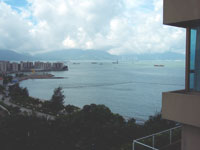General Information
Location:
- 9.6 million square kilometers
- China’s continental coastline extends for about 18,000 kilometers
- more than 5,000 islands


Land Formation and Rivers:
- rivers total 220,000 kilometers in length in China. The Changjiang (Yangtze) and the Huanghe (Yellow) are world known.
- The highlands and hill regions account for 65 percent of the country’s total land mass
- more than 2,000 lakes
- The highest mountain peak is Qomolangma (Everest), the highest in the world, 8,848 meters above sea level
- the lowest point is the Turpan Basin, 154 meters below sea level


Climate:
- The latitude spans nearly 50 degrees
- The greater part of the Chinese territory is situated in the Temperate Zone, its southern


General:
- China, as the world’s most populous country, has a population exceeding 1.2 billion, which makes up 22 percent of the world total. To bring population growth under control, the country has followed a family planning policy since the 1970s.
- China is a multiracial country with 56 ethnic groups, including Achang, Bai, Bonan, Blang, Bouyei, Korean, Daur, Dai, De’ang, Dongxiang, Derung, Oroqen, Russian, Ewenki, Gaoshan, Gelao, Hani, Kazak, Han, Hezhen, Hui, Jino, Gin, Ingpo, Kirgiz, Lahu, Li, Lisu, Lhoba, Manchu, Maonan, Mongolian, Monba, Miao, Mulam, Naxi, Nu, Primi, Qiang, Salar, She, Sui, Tajik, Tatar, Tu, Tujia, Va, Uygur, Uzbek, Xibe, Yi, Yuigur, Yao, Tibetan, and Zhuang. The Han people account for 92 percent of the population.
- China is a multi-religious country. Taoism, Buddhism, lslamism, Protestantism and Catholicism have all developed quite a following in this country. Freedom of belief is a government policy, and normal religious activities are protected by the constitution. China is divided into 23 provinces, five autonomous regions, four municipalities under the direct jurisdiction of the Central Government, and one special administrative region.
- The 23 provinces are Hebei, Shaanxi, Liaoning, Jilin, Heilongjiang, Shaanxi, Guangdong, Sichuan, Guizhou, Yunnan, and Hainan;
- The five autonomous regions are Inner Mongolia, Ningxia, Xinjiang, Guangxi, and Tibet;
- The four municipalities are Beijing, Shanghai, Tianjin, and Chongqing;
- Hong Kong is the special administrative region.
- Beijing is the capital of the People’s Republic of China.
Age Structure:
- 0-14 years: 21.4%
- 15-64 years: 71%
- 65 years up: 7.6%
- Median Age: 32.26 years
Ethnic Groups:
- Han Chinese = 91.9%
- Zhuang, Uygur, Hui, Yi, Tibetan, Miao, Manchu, Mongol, Buyi, Korean, other = 8.1%
Religions:
- Daoist (Taoist), Buddhist, Muslim = 1% – 2%, Christian = 3% – 4%, Note: Officially Atheist
Business & Industry
- GDP (Purchasing Power Parity): $8.158 trillion
- GDP – real growth rate: 9.2%
- Labor Force: 791.4 million
- Labor Force – by occupation: agriculture = 49%, industry = 22%, services = 29%
- Industrial Production Growth Rate: 27.7% (2005 est.)
- Electricity Production: 2.19 trillion kWh (2004)
- Oil Production: 3.504 million bbl/day (2004)
- Oil Consumption: 6.391 million bbl/day (2004)
- Oil Imports: 3.226 million bbl/day (2004)
- Export Partners: US 21.1%, Hong Kong 17%, Japan 12.4%, South Korea 4.7%, Germany 4% (2004)
- Total Imports: $631.8 billion f.o.b. (2005 est.) –
- Import Partners: Japan 16.8%, Taiwan 11.4%, South Korea 11.1%, US 8%, Germany 5.4%
- Exchange Rates: yuan per US dollar – 8.19(2005), 8.2768(2004), 8.277(2003), 8.277(2002), 8.2771(2001)
- Telephones – mobile cellular: 269 million (2003)
- Internet Users: 94 million (2004)
- Number of Airports: 389 paved runways

